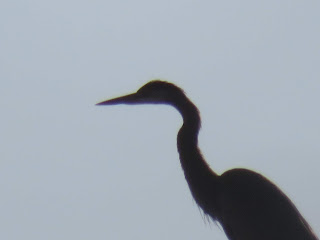This cultivated flower is some sort of quince. The blooming flowers are very showy right now. The orchards are blooming and getting pollinated for fall fruits.
The fringe of red coloring is the rapid, new growth. These leaves are unblemished right now, before the attacks of the insects that will come. Plants produce jasomate and salicylate acids as natural pest control, but gardeners help with neonicotinoid insecticides, often with unexpected results.
The buds of the cottonwoods are just beginning on some trees. The hormone Auxin seems to control bud development, but different trees control this hormone differently. The cottonwoods are remarkably flexible on propagation , but the weak link is that they need floods to prepare the ground. Which does not happen with the dam at Cochiti. Humans are getting better at living in odd places like a floodplain.
This bird is actually multitasking. Eating elm seeds, eating bugs that are eating elm seeds, protecting territory, hiding from hawks. Busy schedule.
This is a small branch of an apple tree. It has some odd bumps on the new growth that do not seem like buds.
The underside looks nothing like an insect, but I understand that the scale insects do not look or act like insects either.
This seed bug is definitely what an insect should look like. There will be many more of them as the weather warms up. there are many features of this hawk to make is distinctive . The brown hood with white body. The rounded tail with the long thin wings. A Swainson's hawk
This red tailed hawk also has a short tail, but also short wings. The brown head also shows brown body and lighter chest.
Even without having other cues, the silhouette of the tail shows that this is a red tailed hawk. The coopers hawk have a long thin tail, the Swainson's had the wing tips hanging past the tail like coat tails.
But from the front the fierce hawk stare is pretty universal. Kind of look a librarian gives to ruffians before they get a loud "Shush"
Corrales irrigation includes acequias that flood fields and lead to many different effects compared to sprinklers. Early in the season the surprised invertebrates rise to the water surface where ducks are eagerly waiting for them.
After use, the water drains out into the clear ditch. The water on the left has come down from Romero Road. All the nutrients have already been deposited on the way down and the water is clear, sterile. Good for fish, bad for everything else. On the right is the drain that brings the lateral acequia water loaded with sediment into the clear ditch. Here the cattails grow thickly in the shallow, well aerated, and artificially fertilized silt.
The mallards travel around to wherever the location meets all their needs for food, breeding and safety. They are the stereotypical sign of Corrales.This seems like a raptor's nest, these birds usually build and repair an older platform, but no activity on it yet.
The herons are still around but seem to drop in and out of the bosque on their own schedules. They prefer to be a little secluded lately
That neck is not only good for fast strikes. It is also a good indicator of their moods and alertness. They extend when they have just arrived in a new place, and when there is a possible disturbance nearby.
This bluebird is much more cryptic. From this angle, we can't even see the blue on it's back.
Many creatures live in the bosque, it can be hard to figure out what birds are using any particular hole, bu the experts say the size of the opening is critical to the occupants.
The bewildering species of ants we have in the bosque are making themselves known. Many species form exit holes on the edge of road. This species builds a small cone, usually in areas where the entrance could suffer from flooding. Others are only found on the inside of old logs.





















Always learn something new and interesting about nature in Corrales from your blog...thanks.
ReplyDeleteThank you, the local nature continues to contain mysteries
ReplyDelete